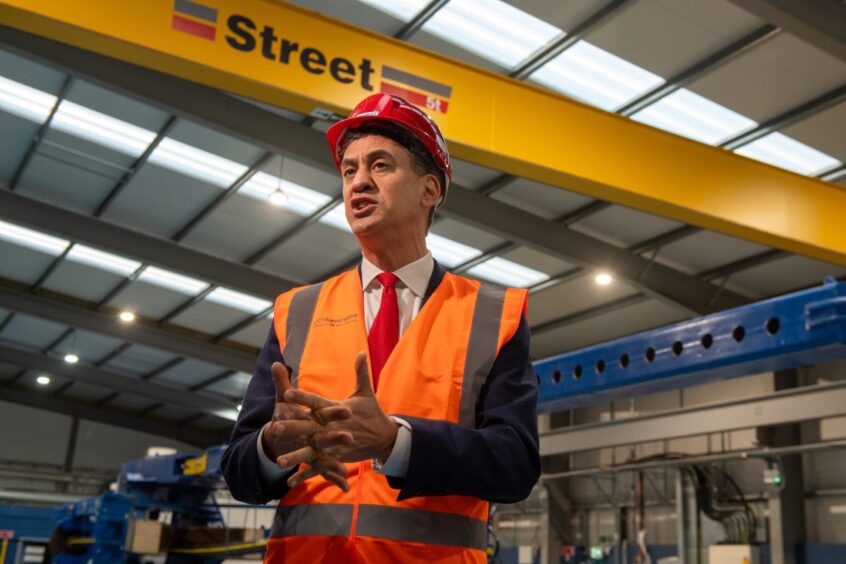
The UK government announced it will set out an action plan for achieving its target of at least 95% clean power by 2030 on December 13.
The plan is aimed at overhauling the energy system in the UK to help to bring down energy prices and reduce reliance on fossil fuels while spurring job creation and investment in both generation capacity and infrastructure.
The plan centres around three elements – cleaning up a “dysfunctional” grid, prioritising projects that will contribute to the 2030 target in the planning system and making further reforms to help accelerate the deployment of domestic clean power. The government is aiming to enable the build-out of a range of energy sources, including renewables and nuclear, as part of the 2030 target.
The UK Department for Energy Security and Net Zero (DESNZ) said the grid connection queue had grown tenfold to 739 GW over the past five years, but that many of the proposed projects involved were speculative or did not have the necessary funding or planning permission to progress. The new action plan is aimed at ending the “first come, first served” system for processing this queue. Instead, the government intends to re-order the queue, remove “unviable” projects from it and accelerate connection timescales for the projects that are considered to be most necessary for meeting the 2030 clean power goal.
In terms of introducing further reforms in support of clean power adoption, the government intends to update the renewable auction process so that projects can receive agreed funding before their planning permission has been finalised. This is aimed at preventing delays to bringing new projects online.
Also included under plans for further reforms are moves to unlock investment into supply chains, allocate funding from the clean industry bonus and use the growth of clean power for job creation across the country. Additionally, the announcement included “pro-consumer” reforms to offer households more choice and access to cheaper energy tariffs.
DESNZ said the plan would provide clarity on what the energy mix would look like for 2030 on both a national and regional level, including updating national policy statements for energy in a bid to help guide planners.
In a further attempt to streamline regulatory review processes, the government will bring onshore wind back into the nationally significant infrastructure project (NSIP) regime in England, which DESNZ said would make it easier to advance the development of onshore farms larger than 100 MW. This follows the government’s lifting of what it described as a de facto ban on onshore wind development within days of taking office in July.
As part of the efforts to prioritise projects considered important contributors to the 2030 goal, the government intends to introduce a Planning and Infrastructure Bill that will contain measures to streamline the delivery of critical infrastructure in the planning process.
DESNZ said that delivering these reforms – which it described as the most ambitious in a generation – would unlock £40 billion per year of investment in domestic clean power projects and infrastructure across the country, mainly from the private sector.
“A new era of clean electricity for our country offers a positive vision of Britain’s future with energy security, lower bills, good jobs and climate action,” stated UK Secretary of State for Energy and Climate Change, Ed Miliband. “This can only happen with big, bold change and that is why the government is embarking on the most ambitious reforms to our energy system in generations,” he continued. “The era of clean electricity is about harnessing the power of Britain’s natural resources so we can protect working people from the ravages of global energy markets.”
The government’s announcement was welcomed by industry participants including renewables developers, energy suppliers and the new publicly-owned National Energy System Operator (NESO) – whose proposals helped to inform the development of the action plan.
However, the challenges involved in delivering the plan will be considerable, as some responses to the government’s announcement highlighted.
“The electricity system was originally built to use fossil fuels and now needs now to be re-wired to ensure the cheaper price of renewables can be reflected in household energy bills, bringing them down for good and ensuring foreign dictators can never again hold our country to ransom,” said independent climate change think-tank E3G’s campaigns director, Ed Matthew.
“The plan will boost those efforts but must be supported by major policy reforms to end profiteering, cut the cost of investment and help households to access clean power when it is cheapest to do so.”
Meanwhile, environmental group Greenpeace welcomed the overall direction of the plan but criticised some of its aspects.
“The winds of change are finally blowing in the right direction,” stated Greenpeace UK’s policy director, Doug Parr. “But this roadmap must treble the amount of power generated by offshore wind and solar and double onshore wind, at least, if it’s to deliver the kind of ambition needed to turbocharge our way to a renewably powered future.”
Parr went on to say that a plan for clean power should not extend the lifespan of oil and gas by incorporating carbon capture and storage (CCS).
“Any money earmarked for CCS – which is expensive, impossible to make zero carbon and fails to detach electricity prices from the volatile international gas market – would be better spent on the renewables, grid and storage infrastructure that will actually deliver clean power,” he said.
Parr’s comments came days after a final investment decision (FID) was made on two of the UK’s first CCS projects, the Northern Endurance Partnership (NEP) and Net Zero Teesside Power (NZT Power). Indeed, the government’s announcement mentioned the FID as a step towards achieving its decarbonisation goals.
Recommended for you
